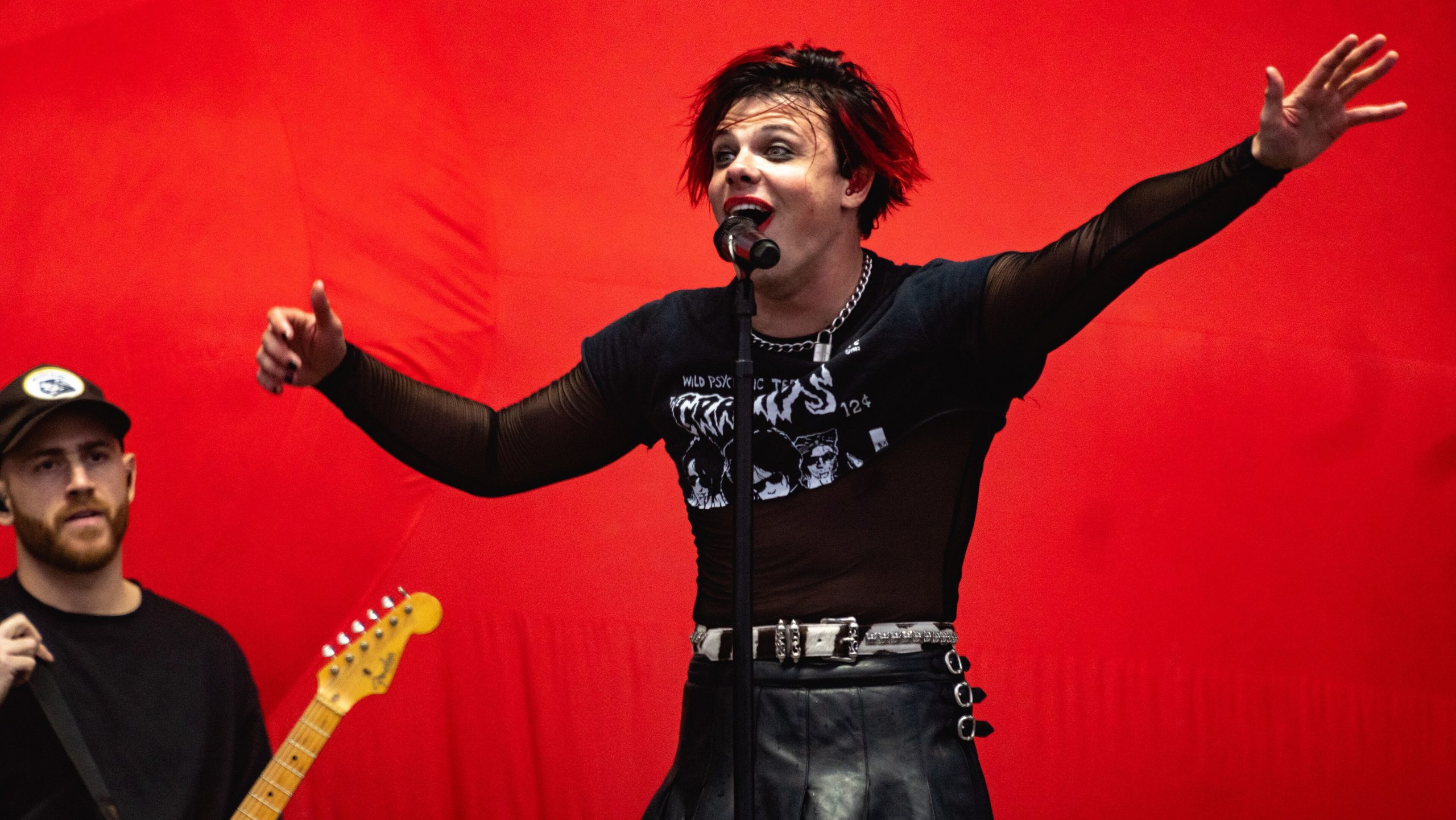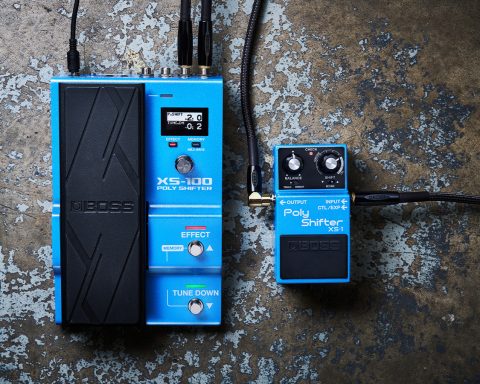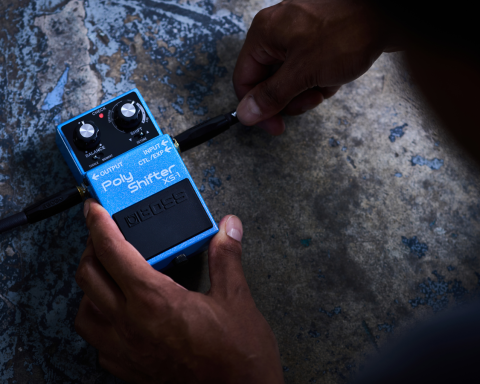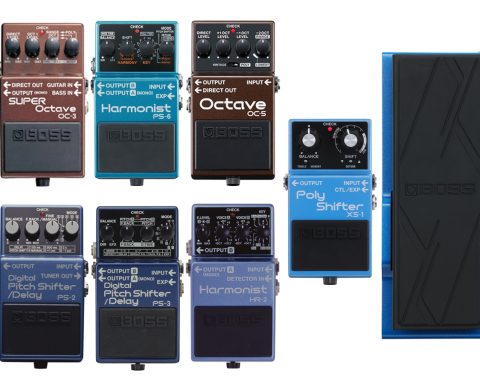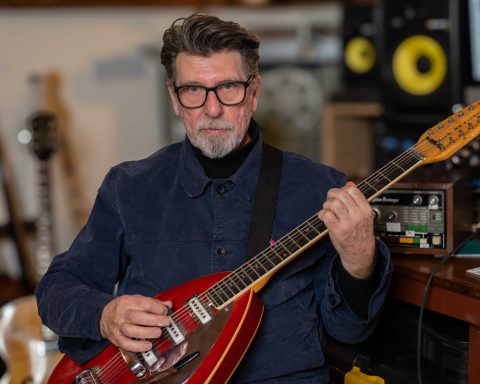Ben Jackson is the kind of behind-the-scenes powerhouse every touring artist dreams of. As an expert guitar tech, he’s part of the glue that keeps the high-energy live shows of Yungblud—aka British artist Dominic Harrison—running smoothly night after night. With four musicians covering guitars and bass across the stage (including Harrison himself, lead guitarist Adam Warrington, bassist Silke Blansjaar, and new six-string recruit Sam Simmonds), Jackson’s technical prowess has become a vital part of the performance.
Constantly Learning
Naturally, his journey didn’t begin with number-one-selling, stadium-filling artists like Yungblud. After getting his start on the road with While She Sleeps, Jackson moved on to acts like Don Broco, The Amity Affliction, and Neck Deep.
It was a steady grind—building skills, gaining trust, and constantly learning. In 2019, he got the call that changed everything: a chance to go full-time with Yungblud, whom he’d known since Harrison was just eleven years old.
That personal connection runs deep. Jackson first met the burgeoning performer through his dad’s music business and even remembers painting the family fence as a regular helping hand. Over the years, their friendship evolved into a professional partnership rooted in shared passion and mutual respect.
Today, Jackson isn’t just responsible for guitars and gear—he’s a calm presence in the chaos, a problem-solver, and a key figure in the creative machine that is Yungblud.
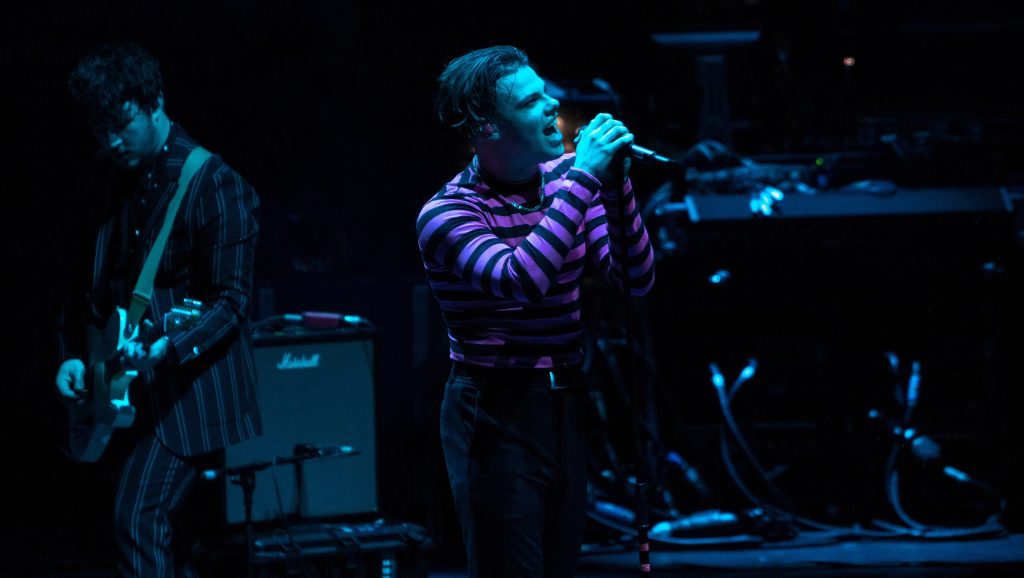
In the Family
What’s your role in the Yungblud crew?
I’m essentially a guitar technician, but I’ve stage-managed over the last few years, too, somewhat out of necessity. I’ve been on this gig for so long that I know what Dom will and won’t like. But I’m going to be stage-right guitar tech for the foreseeable future. There are four guitar players in the band—Dom and Adam Warrington (stage-right), plus Sam Simmonds and Silke Blansjaar, the bass player (stage-left).
Dom is the primary frontman guitarist who plays acoustic or electric. Adam is the main guitarist who has been on the gig for seven years. He’s got an obnoxious stereo tube amp rig, all controlled using a BOSS ES-8 Effects Switching System. We picked all the BOSS 500-series pedals for his pedalboard—the DD-500 Digital Delay, MD-500 Modulation, and RV-500 Reverb.

We love those pedals so much that we got the same for our new guitarist, Sam Simmonds. He’s a longtime friend of Adam, and we wanted to keep it in the family. Then there’s Silke Blansjaar, our bassist. Our stage-left tech, Elliot Russell, looks after Sam and Silke.
Enjoyable Job
How did you get into guitar tech work?
My roots are in punk rock and metal. I always played guitar in bands and had an interest in the technical side of it. There were opportunities to go on tour and help out my friends’ bands that were popping off around me. While She Sleeps from Sheffield blew up around 2012, and they gave me an opportunity to go out on tour with them.
Watching the headline bands’ techs at work taught me a lot. It felt like the most enjoyable job I could have. That experience shifted my thinking from wanting to be in a band to working as a tech.

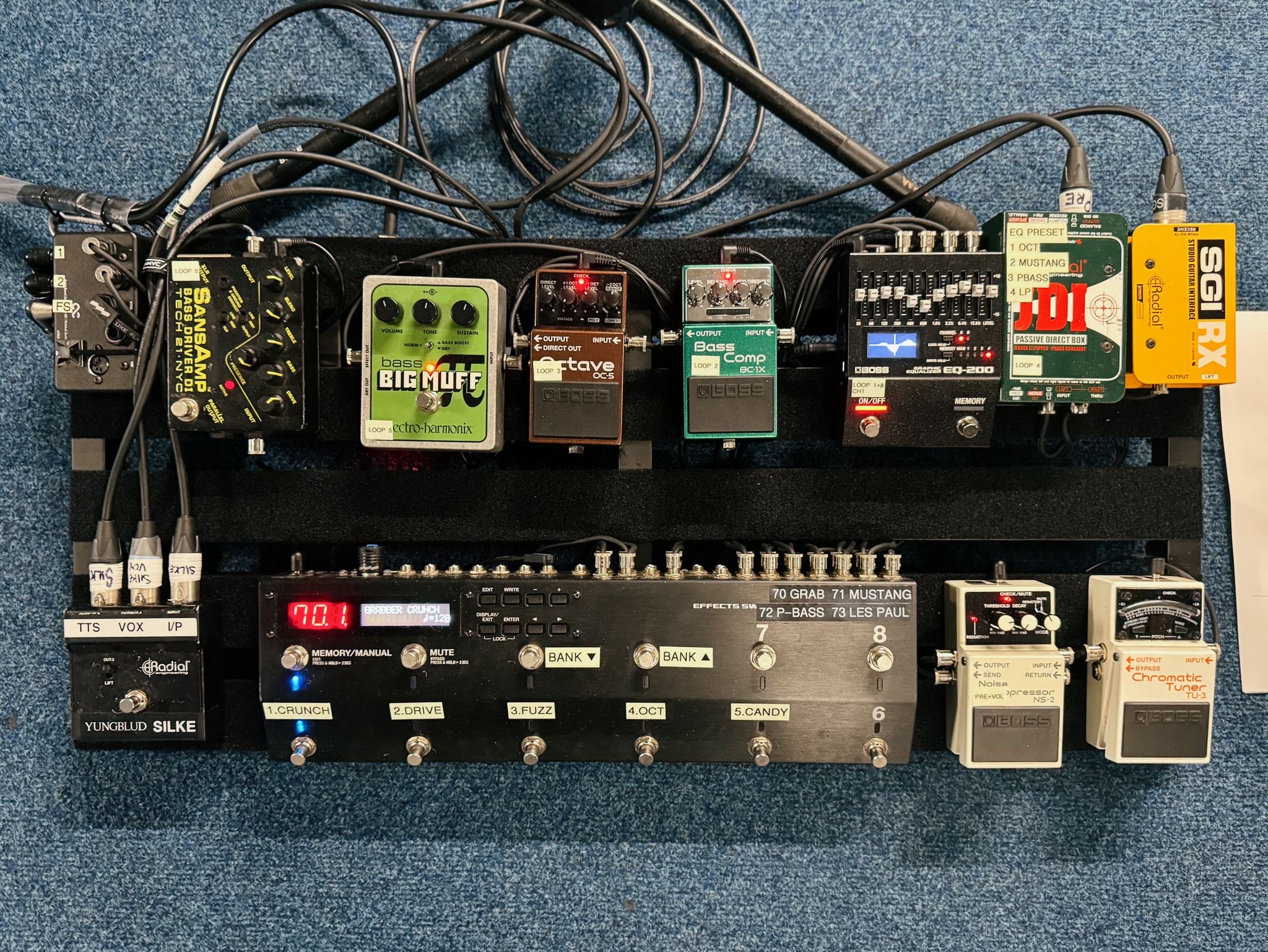
I became friendly with the people at Raw Power Management, and they put me in touch with other acts. So, around 2014, I got involved with Don Broco, who kept me really busy. It all grew from there.
Afterward, I toured pretty hard with an Australian band called The Amity Affliction for about two years. We went over to the States and did a Warped Tour. Then, in 2018, I got involved with the Welsh band Neck Deep, whom I met at American festivals in 2017. I was with those guys for about a year before I got a phone call from Dom, or Yungblud, as he’s better known.
What other artists have you worked with recently?
Over the last couple of years, I’ve done bits and pieces with other bands like Beartooth and Spiritbox, but I’ve mainly worked with Dom.
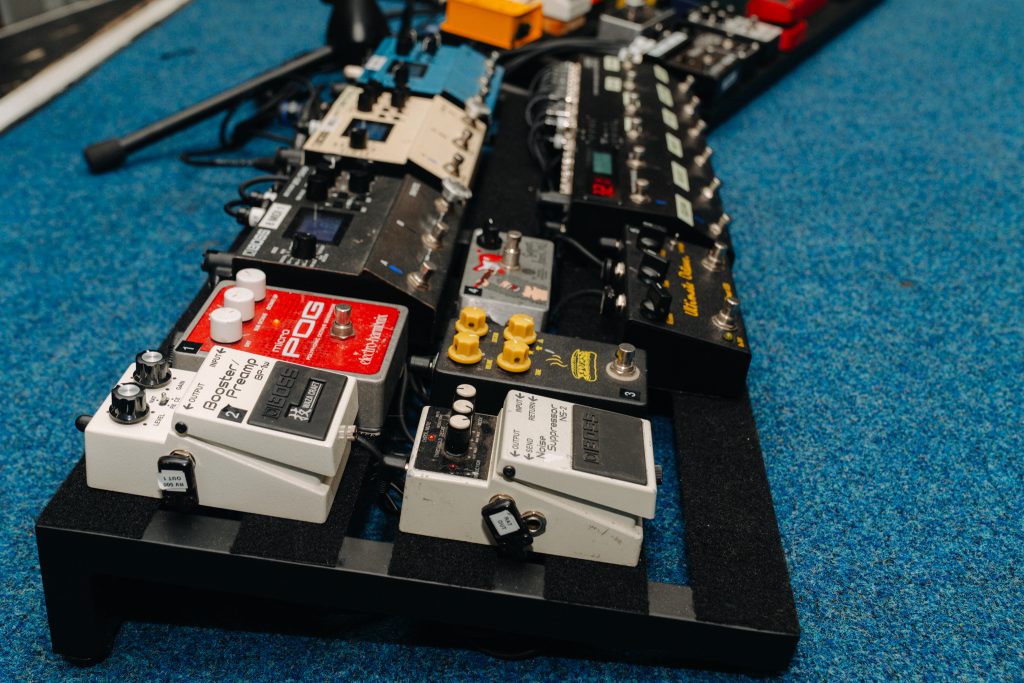
An Energetic Young Lad
How long have you known Yungblud?
I was 21 when I met him at 11 years old. I used to work for his dad. He had a music shop in Leeds and on Denmark Street in London, and I got a job at his factory and distribution facility in Doncaster. At one point, I was asked to paint his fence, and before I knew it, I was his helping hand.
So, when I first met Dom, he was a young lad with plenty of energy, and he was fascinated with the tech work I was doing and the world of rock music in general. I even remember sitting on the sofa writing songs with him. I told him, “As soon as you need a guitar tech, I’ll sack off any band that I’m working with and come and work for you.” And in 2019, I did.
Did Yungblud display musical talent early on?
Without a doubt. He played in bands from the age of about 12, and I never thought that much about it. But when he was about 14, he showed me some songs he’d written, and I thought they were really good. He recorded a bunch of songs and started to get some interest from management.
"He’s got literally thousands of demo recordings, and they’re all brilliant. There are songs that have never seen the light of day but would be massive."
Did success come quickly for Yungblud?
I think so, but he’d probably disagree. He’s definitely the hardest-working person I’ve ever met, though. I mean, in terms of working hours, it’s probably taken him longer than other people to achieve success. He just doesn’t stop. It’s unbelievable.
He has no other interests in life. His music is his everything. He’s the kind of person who comes home from tour and immediately goes into the studio all night, whereas we’re all in bed for a week. He’s writing most nights.
He is high-functioning ADHD. He’s incredibly creative. He’s got literally thousands of demo recordings, and they’re all brilliant. There are songs that have never seen the light of day but would be massive if someone else got their hands on them. They just aren’t for him, some of them.
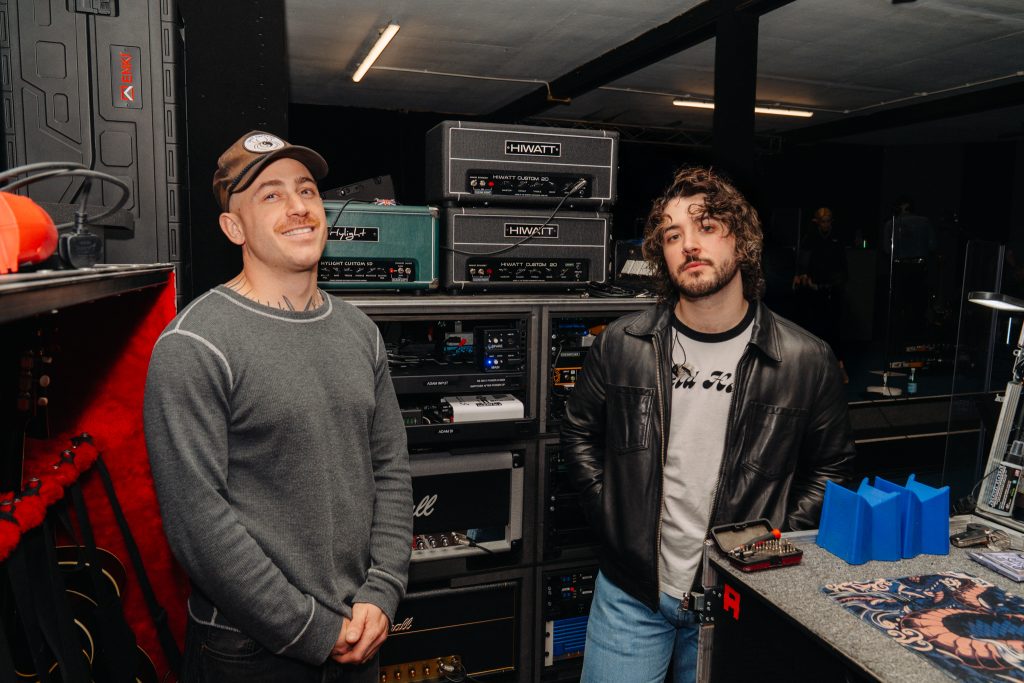
A World of Tones
Tell us about Adam Warrington’s rig.
It’s grown recently. We’re now running two Pedaltrain boards. We’ve got one pedalboard with everything in front of the ES-8 that isn’t utilizing the loops, plus an expression pedal that controls the MD-500 for things like filters. The guitar signal goes into the Digitech Whammy, then a Vox wah, and then we have a Dumble-style drive pedal, plus an MXR Phase 90. After that, it goes into the front end of the ES-8 via a link panel.
In the ES-8, we’ve got an EHX Micro POG in the first loop. We’ve also got a bunch of different drive stages, including a Dunlop Echoplex Preamp, Z.Vex Super Hard On, Fulltone Ultimate Octave, and a JHS Muffuletta, which is a super versatile fuzz pedal. These are for various flavors of gain for different songs.
"It sounds like a complicated setup, but it's bulletproof, and we attribute a lot of that to how solid the BOSS ES-8 is."
It was really interesting experimenting with the position of those gain pedals. The ES-8 came in really handy for that because it enabled us to switch the order of the loops. That function of the ES-8 opened up a world of different tones, and we’ve been able to improve a lot of sounds because of it.
The order in which you put your gain pedals makes a massive difference. Like, are we driving into the front end of the fuzz, or are we driving the signal from the fuzz? It was so much fun experimenting with that kind of thing.
Also in the ES-8 are the BOSS MD-500, which we run mono, the DD-500, which is mono in/stereo out, and then the RV-500, which is fully stereo. The stereo sends from the RV-500 go left and right to a stereo MIDI switcher custom-built by Fretronics Engineering. That sends a stereo signal either to our two dirty amp heads (a 1959 Handwired Marshall and a Silver Jubilee Marshall) or a pair of Hiwatt Custom 20 heads for clean.
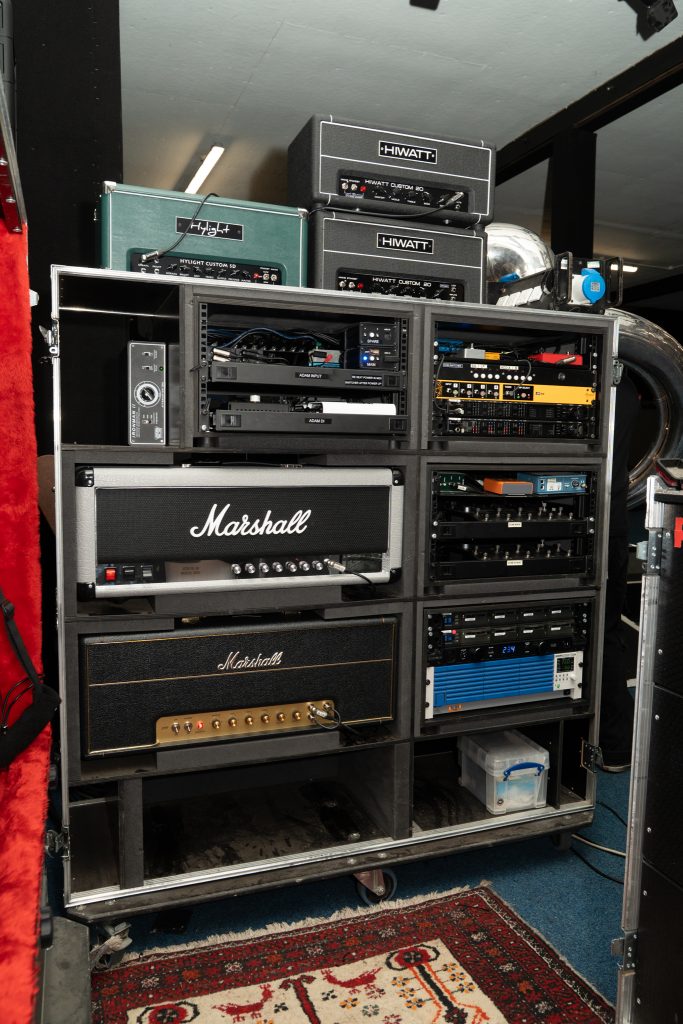
So, we have true stereo dirty and true stereo clean. It sounds like a complicated setup, but it’s bulletproof, and we attribute a lot of that to how solid the BOSS ES-8 is.
Banking On It
How do you arrange Adam Warrington’s presets using the ES-8?
Every song has its own bank. We’ve programmed about 50 different songs on there. We have the setlist in order, going from about bank 70, and he just banks up after each song throughout the show. Adam likes the control the ES-8 gives him. It would be no bother for us to send him a patch change from playback at the start of every song, but he likes to switch patches when he wants.

What initially drew you to the ES-8?
My friend Sean Long from While She Sleeps used an ES-8 for years. Sam Bowden from Neck Deep and Dean Rowbotham also used one. I liked the editing suite, but as a standalone unit, it is very usable. It really made sense to me. I love that you can switch it between memory mode to control patches of effect loop combinations or manual mode to turn effect loops on and off individually.
Manual mode is particularly useful in the studio when trialing different sounds. Also, if you’re in a live situation, you’ve always got an option to take a pedal out if it fails. That’s actually something that’s happened to us before when an Echoplex Preamp pedal failed in a live situation. The ES-8 saved our arse.
"Adam finds the DD-500, MD-500, and RV-500 super easy to use. He can find the sounds he wants super fast, which is extremely useful in the studio or rehearsals."
What do you like about BOSS pedals as a guitar tech?
I’ve used BOSS compact pedals since I was 14 years old. But I love the interface of the 500-series pedals; I love the layout and how simple they are to program. And the MIDI works perfectly with the ES-8. When we had Strymon stuff, it felt like we had to do a math equation every time. The BOSS gear is a lot more straightforward and simple to use. It just makes sense.

Adam finds the DD-500, MD-500, and RV-500 super easy to use. He can find the sounds he wants super fast, which is extremely useful in the studio or rehearsals. He’s so familiar with the 500 series pedals now that he can even dial something in visually and be pretty close.
The other thing, of course, is that BOSS pedals are bulletproof. They’ll take an absolute kicking and just keep on working. Adam’s DD-500, MD-500, and RV-500 have had a lot of beer spilled on them, but they never fail.
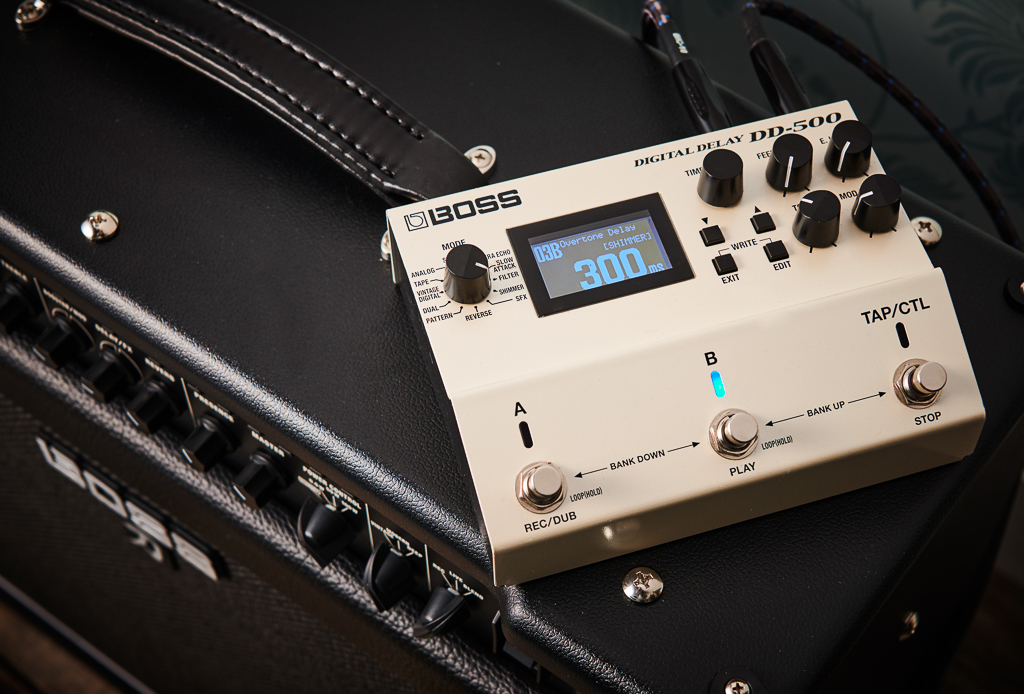
Creating Sonic Width
What are some of your favorite DD-500 Digital Delay sounds?
Because Adam has a true stereo rig, we can really take advantage of the DD-500’s super-wide delays. For example, he’ll get an attack from the left amp and a delayed sound from the right amp, which creates a sonic width that sounds incredible in our in-ears and front-of-house.
What are some of your favorite MD-500 Modulation sounds?
Adam’s been utilizing a lot of sounds from the Filter mode, which he uses an expression pedal with. The opening sound on the song “Hello Heaven, Hello” (which is the opening track on the new album, Idols) is exactly that. Straight out of the gate, you hear the DD-500, MD-500, and RV-500, plus a little bit of drive.
"Adam’s the first person to sing the praises of the BOSS DD-500, MD-500, and RV-500."
It’s an arpeggiated riff that starts off with a high-pass filter and then gradually opens up to the full signal. That’s one of my favorite songs off the new record. It’s such a great opening to an album, let alone a song. It sounds completely different from anything he’s done before.
Adam’s so creative, and he loves the tools he’s been given; he’s the first person to sing the praises of the BOSS DD-500, MD-500, and RV-500. He loves those pedals. You can do so much with them.
I’ve suggested having them in a rack offstage, but he doesn’t ever want them further than a few feet away. He likes to adjust parameters like delay trails by hand. He uses the pedals as instruments, like part of the performance. He gets that influence from Graham Coxon and Ed O’Brien. He’s also a massive John Frusciante fan.
Pedalboard Real Estate
Which other BOSS pedals does Adam Warrington like?
He likes the CE-2W Chorus. The guitar sound in “The Funeral” is that pedal. We had the CE-2W on his board for a while, but he only used it in that one song. Pedalboard real estate became a bit precious, so he started using the MD-500 Chorus mode for “The Funeral” instead.
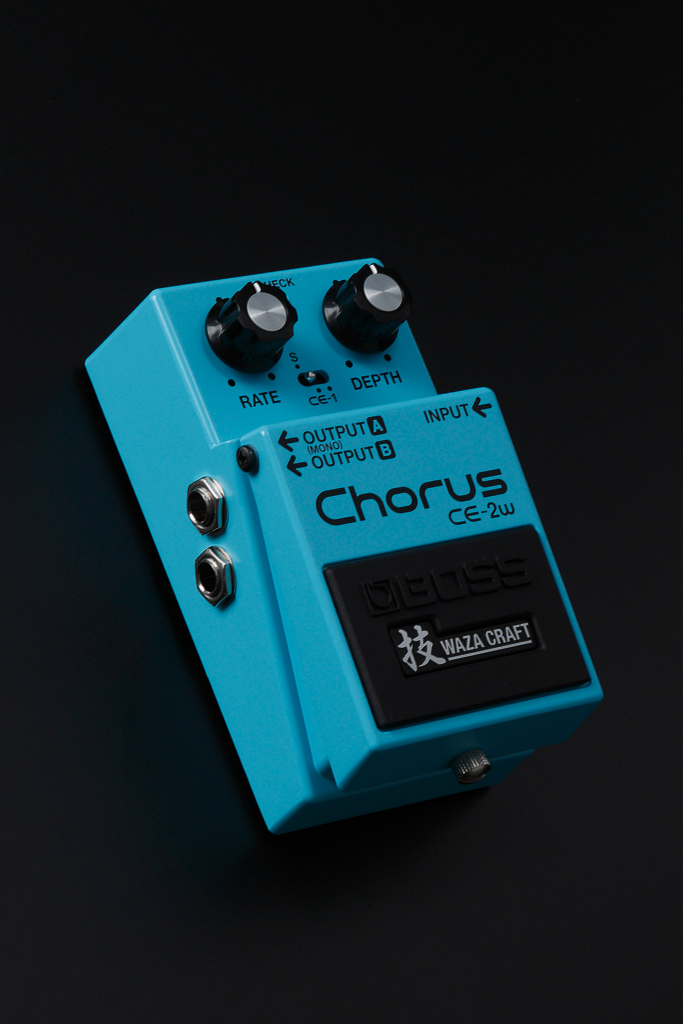
He also used a BD-2 Blues Driver for a while. It’s a very versatile pedal. It’s one of those pedals that just sounds great as soon as you plug it in. That’s one of the great things about BOSS pedals generally—it’s quick and easy to get a great sound out of them. I’ve used the BD-2 for bass, too. That might be a good choice for Silke at some point to get that cool, gritty crunch. She uses a BOSS EQ-200 Graphic Equalizer, which is also very versatile.
Which BOSS pedals does Sam Simmonds use?
We like the 500-series pedals so much that we just decided to use them. I mean, there was absolutely no reason to look elsewhere. Before doing the live record, we had a month of rehearsals without Sam’s MD-500, DD-500, and RV-500 pedals. But we had all the sounds we needed within three days when we got them. They’re incredibly versatile, and you can do whatever you want with them. That goes to show how much trust we have in BOSS pedals.
